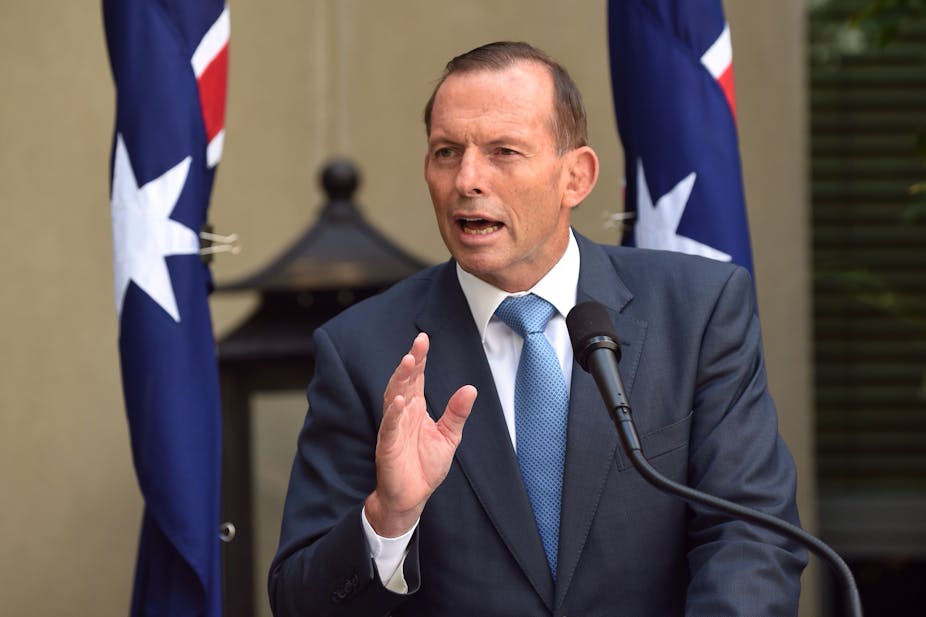Prime Minister Tony Abbott’s announcement of a knighthood for Prince Philip on Australia Day sparked both a mainstream and social media storm. But Abbott’s response to this backlash, when he casually dismissed the public expression of incredulity at the knighthood, only served to create another social media story. Abbott said:
Social media is kind of like electronic graffiti and I think that in the media, you make a big mistake to pay too much attention to social media.
You wouldn’t report what’s sprayed up on the walls of buildings and look, as I said, social media has its place, but it’s anonymous. It’s often very abusive and, in a sense, it has about as much authority and credibility as graffiti that happens to be put forward by means of IT.
This was not the first time Abbott has described social media as such. And while he is is partly right, he is mostly wrong. Social media is indeed electronic graffiti, but the big mistake is not in paying too much attention to it, but in paying too little.
As a former journalist, Abbott should know that everyone who writes in public writes to be heard. The evidence is found not only in contemporary case studies, but in the role of graffiti in social and political life through the ages.
Like all forms of human expression, graffiti – including its electronic form – has a wide range of quality. Abbott’s narrow view of graffiti seems to confuse the banality of “X woz here” with graffiti as a tool of subversion and a medium for the expression of political criticism and social outrage.
While most now associate the term “graffiti” with tags or drawing “sprayed up on the walls”, it was originally used to refer to the casual writing and drawing found on the walls of Pompeii, Rome and Egypt. Graffiti is found throughout the world on buildings, in public and private locations, on natural landmarks or sacred temples, and in and on the objects of daily life.
Everywhere humans go they leave graffiti. Ancient tourists scrawled on the walls of the pyramids. Long before that they drew cave paintings such as those on Australia’s Burrup Peninsula to record life and events in ancient human societies.
The development of writing allowed people to produce inventive graffiti to make jokes, defame their enemies, boast about their sexual prowess, profess their love and express dissent. Graffiti may have been anonymous but it could be powerful. It has certainly been a medium that subverted and challenged the status quo and presented new ideas. What graffiti artists write about, in any age, can be significant as an expression of public focus, attention or concern.
Political graffiti is frequently a sign of inequality in a society. This is a form of media that allows the disempowered or unrepresented to have a public voice. Some of the most potent public political statements today begin as graffiti. One of the most successful contemporary artists, Banksy, is a graffitist. Social media transfers graffiti from the street and amplifies its power and impact by rapidly increasing the audience.

Graffiti employs the writing genre of the epigram, as popularised by the Roman poet Martial, Marcus Valerius Martialis, who was known for his obscene and insulting language and astute self-promotion. He understood, with the canny sense of an entrepreneur, that short-form writing was more appealing to a general audience. He targeted politicians, celebrities and anyone he didn’t like.
Martial would love Twitter. Here’s some examples of his work.
A drop of venom, a little bit of gall. Lacking these, my friend, your epigrams lack all.
The rich know anger helps the cost of living. Hating’s more economical than giving.
Your little dog licks your mouth and lips, Manneia. I am not surprised — it always enjoyed eating shit.
Martial was a celebrity in Ancient Rome, but his work became a kind of gold standard for Western literature when rediscovered in the Renaissance. He influenced a wide range of writers, including Ben Johnson, Samuel Taylor Coleridge and Lord Byron, as well as many European writers.
It’s not surprising that the language of social media uses the brutal brevity of the epigram. The short, concise and clever language produces the best, most powerful graffiti and, not coincidentally, the most entertaining text messages, tweets and social media posts.
To dismiss an outpouring of scorn and criticism on social media as lacking credibility is to ignore public opinion that is unfiltered and at its most honest – even if it’s disagreeable, and possibly wrong. Where and how people express their views is not as important as what they say.
Every prime minister should pay as close attention to what is being said by the electronic graffiti artists on social media as they do to focus groups and opinion polls.

